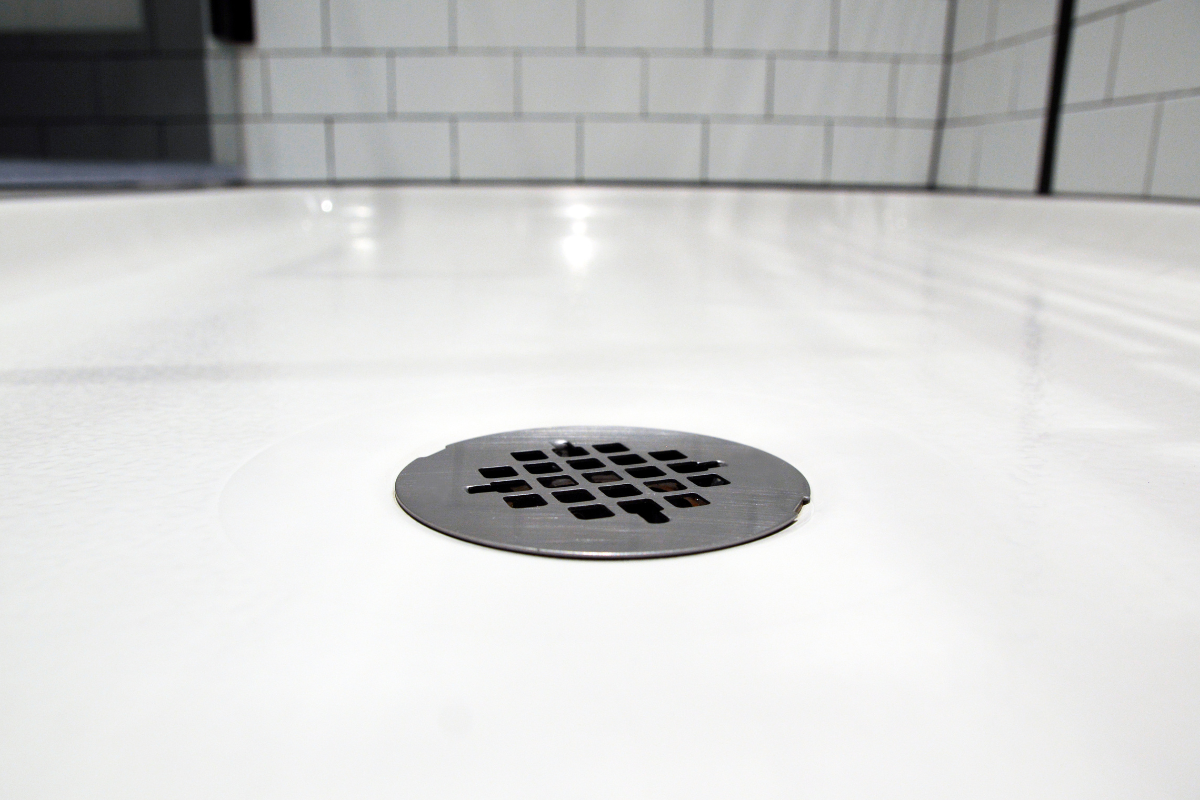 FREE UK DELIVERY.
EXPRESS OPTIONS AVAILABLE
FREE UK DELIVERY.
EXPRESS OPTIONS AVAILABLE

How to Unblock Shower Drain (5 Methods)
|
|
Time to read 6 min
 FREE UK DELIVERY.
EXPRESS OPTIONS AVAILABLE
FREE UK DELIVERY.
EXPRESS OPTIONS AVAILABLE
 UP TO 10 YEARS GUARANTEE
FOR PEACE OF MIND
UP TO 10 YEARS GUARANTEE
FOR PEACE OF MIND
 30 DAY RETURNS
NO QUIBBLE GUARANTEE
30 DAY RETURNS
NO QUIBBLE GUARANTEE
|
|
Time to read 6 min
Table of Contents
A clogged shower drain is one of the most common household plumbing issues.
Slow draining water, unpleasant smells, and standing water in the tray, especially when water starts to pool, are all signs your clogged or blocked shower drain needs attention. The good news is that in most cases, you can fix the problem yourself without expensive tools or calling in a plumber.
In this guide, we’ll walk you through how to unblock a shower drain quickly and effectively, using methods that actually work.
Before learning how to unblock a shower drain, it helps to know what causes the problem in the first place. The most common culprits of a clog are:
Hair build-up: easily the biggest cause, especially in households with long hair. Hair clogs are a common issue in both showers and sinks.
Soap scum: soap mixes with minerals in water and creates a sticky residue. Grease can also contribute to this sticky build-up.
Hard water deposits: limescale can collect in the pipework, making blockages worse.
Foreign objects: items like shampoo tops, razor caps or small toiletries may accidentally fall in, along with other debris.
These are some of the best tools and effective ways to deal with a blocked drain. Each method is an effective solution for unblocking your drain and getting water flowing freely again:
Before you start, wear gloves to protect your hands and be prepared to remove hair as a key step. Take off the drain cover and put on a pair of rubber gloves. Begin removing hair and debris by pulling out any blockages you can reach by hand.
Check carefully around the plughole for trapped hair, using tweezers or pliers if necessary. Dispose of all removed debris in bin bags to keep your workspace clean. This is often all that’s needed to get water flowing again.
If it's still blocked, place a plunger over the drain, making sure there’s enough water to cover the base. Applying petroleum jelly to the rim of the plunger can help create a better seal for more effective plunging. Push down firmly, then pull up to create suction. Repeat several times to help dislodge the blockage.
This natural method can help break down soap scum and light build-up:
Start by pouring half a cup of baking soda into the drain.
Next, pour half a cup of white vinegar into the drain. The chemical reaction between the baking soda and white vinegar will create fizzing and foaming, which helps to break down the clog.
Wait for a few minutes to let the reaction work.
After a few minutes, pour boiling water down the drain to help dissolve any remaining debris.
Finish by flushing the drain with more hot water to ensure all loosened material goes down the drain, clearing the blockage.
A drain snake, or a plumber's snake, can help reach deeper clogs when the above methods have not worked. This tool is especially useful for tough clogs that are difficult to remove, such as those caused by hair buildup.
Insert the snake carefully into the drain and twist, pulling out debris and helping to dissolve hair blockages. This method is effective not only for shower drains but also for sinks with similar obstructions.
Commercial drain cleaners can be effective for unblocking stubborn shower drain clogs, but they often contain harsh chemicals that can damage pipes and pose risks to your health and the environment. Always read and follow the instructions carefully when using these products to ensure safe and proper application.
If you’ve tried these methods and the water still isn’t draining, the blockage might be deeper in your plumbing system. In that case, it’s best to call a professional plumber. Persistent blockages can signal more serious pipe issues that need expert tools and knowledge.
Once you’ve learnt how to unblock a shower drain, it’s worth taking a few extra steps to stop it from happening again. Regular care will keep your shower draining smoothly and save you from the hassle of recurring blockages.
Hair is the number one cause of shower drain blockages. A simple drain cover or hair catcher is an inexpensive solution that stops loose strands before they reach the pipework. Empty it frequently to keep water flowing freely.
Soap scum and residue build up slowly over time. Pouring a kettle of hot water down the drain once a week helps to loosen deposits and keeps things moving. This quick routine is especially useful in hard water areas.
Even with a hair catcher in place, smaller bits of soap and hair can collect around the cover. Give it a quick rinse and wipe each week to avoid slow drainage. It only takes a minute but makes a big difference.
It’s easy for small objects such as shampoo caps, razor covers, or even bits of packaging to end up in the shower tray. Be mindful of what’s near the drain and remove anything that could slip in accidentally.
DIY methods like baking soda and vinegar can be used every month or so to keep drains clear without relying on harsh chemicals. Regular upkeep prevents build-up from reaching the point where blockages occur.
Unblocking a shower drain doesn’t have to be stressful. With a few simple steps and some regular upkeep, you can keep your bathroom running smoothly and avoid the hassle of standing water or costly call-outs.
Prevention is always easier than cure, so adding small maintenance habits into your routine will make a big difference over time.
At House of ENKI, we’re passionate about creating bathrooms that are stylish, reliable and easy to maintain. Alongside our taps and fittings, we also offer a full range of shower accessories, including shower wastes, designed to keep your bathroom running smoothly.
Browse the House of ENKI collection today and find everything you need to create a bathroom that looks great and works beautifully every day.
Often, simply removing the drain cover and pulling out trapped hair or debris by hand is the fastest fix. If that doesn’t work, a plunger is usually the next best step.
Yes. Baking soda and vinegar are a great natural option. Pour them into the drain, let the mixture fizz for 20–30 minutes, then flush with hot water.
A quick weekly rinse with hot water helps, and clearing the cover of hair every few days will stop bigger blockages from forming.


